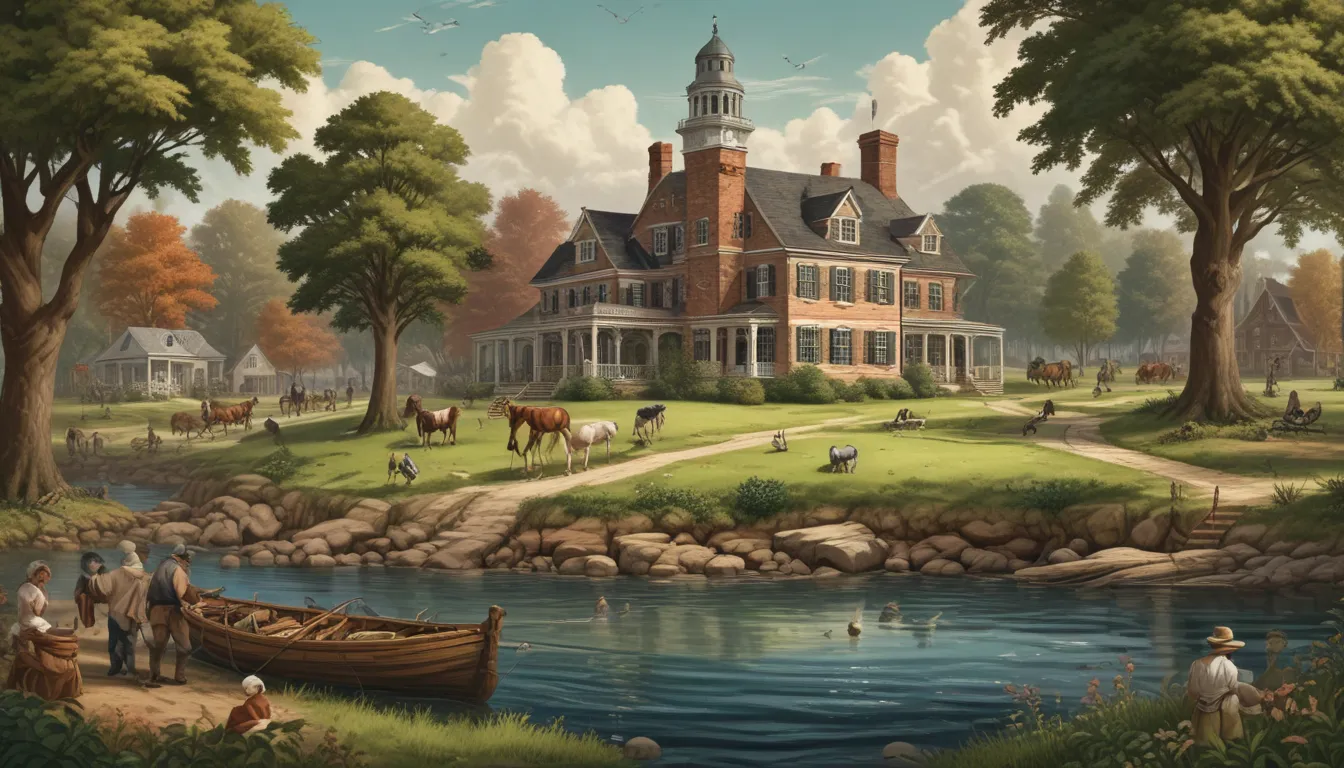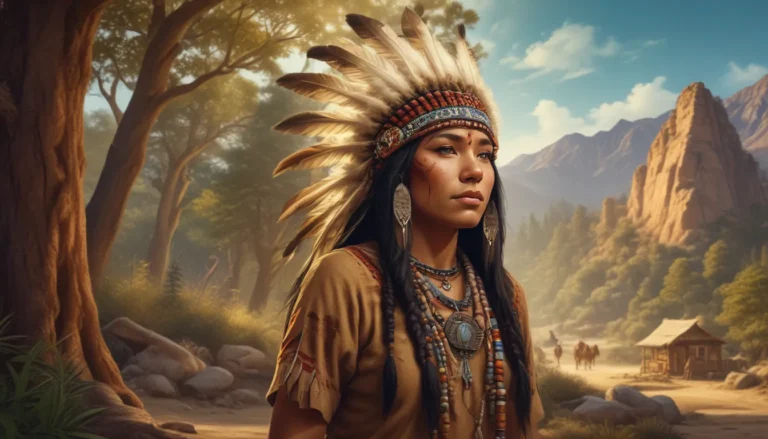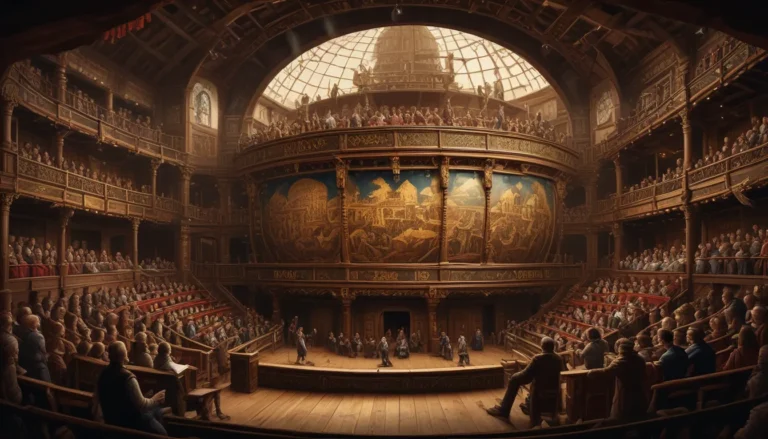The images in our articles may not match the content exactly. They are used to grab your attention, not to show the exact details in the text. The images complement the text but do not replace it.
The Middle Colonies, encompassing Pennsylvania, New York, New Jersey, and Delaware, are a treasure trove of historical significance that has helped shape the early history of the United States. This diverse region, renowned for its cultural richness, economic prosperity, and social vibrancy, offers a compelling insight into America’s colonial past. Join us as we embark on a journey through time to uncover 21 amazing facts about the Middle Colonies, shedding light on the captivating nuances of this historically significant area.
Unveiling the Diversity of the Middle Colonies
The Middle Colonies, a melting pot of cultures, religions, and economic pursuits, played a pivotal role in shaping the social, political, and economic landscape of early America. With a rich tapestry of inhabitants, these colonies epitomized diversity and vibrancy, setting them apart as a unique and dynamic region in colonial America.
The Vision of William Penn in Pennsylvania
In 1681, William Penn, a Quaker, was granted a charter by King Charles II, leading to the establishment of Pennsylvania. Penn’s vision for this colony as a “holy experiment” emphasized religious tolerance, democratic governance, and peaceful coexistence with the Native Americans, laying the foundation for a society built on principles of inclusivity and respect.
The Middle Colonies: The Breadbasket of the Colonies
Fueled by their fertile soil and favorable climate, the Middle Colonies earned the moniker of the “Breadbasket” of the colonies. These regions were prolific producers of wheat, oats, and other grains, making a significant contribution to the agricultural prosperity of the area.
Tracing the Origins of New York City
Before its transformation into New York, the bustling metropolis was known as New Amsterdam. Established by the Dutch in the early 17th century, the city’s diverse and dynamic nature continues to define its essence and character to this day.
Embracing Religious Diversity in the Middle Colonies
Unlike the New England colonies, the Middle Colonies embraced religious diversity, serving as a safe haven for various religious groups including Quakers, Catholics, Jews, and Protestants. This culture of tolerance and acceptance fostered a rich and vibrant societal tapestry in the region.
The Vital Role of the Delaware River
The Delaware River, a lifeline flowing through the heart of the Middle Colonies, served as a crucial transportation artery that facilitated trade and commerce. Its strategic importance bolstered the economic growth and interconnectedness of the region.
Division and Unity in New Jersey
Originally, New Jersey was split into East and West Jersey, reflecting the diverse influences and interests within the colony. While East Jersey was predominantly influenced by English Quakers, West Jersey had a noticeable Scottish presence, showcasing the varied cultural landscape of the region.
A Melting Pot of Ethnicities in the Middle Colonies
The Middle Colonies boasted a diverse mix of Dutch, English, German, Swedish, Scottish, Irish, French, and African populations, creating a rich mosaic of cultures and traditions. This blend of ethnicities fostered a dynamic and inclusive society within the region.
Thriving Trade and Commerce in the Middle Colonies
With their strategic coastal positions and navigable rivers, the Middle Colonies emerged as vital hubs for trade and commerce. The bustling ports and vibrant markets facilitated the exchange of goods, ideas, and cultures, driving the economic prosperity of the region.
The Influence of the Quakers
The Quakers, under the leadership of William Penn, played a significant role in the establishment and growth of the Middle Colonies. Their commitment to religious tolerance, pacifism, and social justice left a lasting imprint on the region’s ethos and governance, embodying principles of inclusion and equality.
A Hub of Innovation and Entrepreneurship
The fertile land and diverse population of the Middle Colonies fostered a culture of innovation and entrepreneurship. From small family farms to bustling urban centers, the region became a hotbed of economic activity and creative ventures, showcasing a pioneering spirit of progress and advancement.
Embracing Democratic Ideals
Reflecting the ideals of the Quakers and Enlightenment philosophy, the Middle Colonies embraced democratic principles that promoted representative government, individual liberties, and participative decision-making processes. This commitment to democracy underscored the region’s dedication to democratic values and governance.
The Cultural Tapestry of New York City
As waves of immigrants flocked to New York City, the cultural landscape of the Middle Colonies expanded exponentially. The city evolved into a melting pot of diverse cultures, languages, and traditions, setting the stage for its future as a global metropolis of inclusivity and diversity.
Instrumental Role in the American Revolution
The Middle Colonies, with their spirit of independence and resistance, played a vital role in the American Revolution. The region’s diverse population contributed to the ideological ferment and collective action that propelled the quest for independence, marking a significant chapter in the nation’s history.
Flourishing Printing and Publishing Industry
The Middle Colonies boasted a thriving printing and publishing industry, fueled by their commitment to freedom of the press and intellectual exchange. This vibrant sector facilitated the dissemination of ideas, fostering a culture of intellectual curiosity and public discourse within the region.
Agricultural Diversity in the Middle Colonies
From the vast wheat fields of Pennsylvania to the lush orchards of New Jersey, the Middle Colonies showcased a diverse range of agricultural practices. These practices not only solidified the region’s reputation as the “Breadbasket” but also established it as a center of agricultural innovation and productivity.
Cultural Exchange Between Europeans and Native Americans
The interactions between European settlers and Native American tribes in the Middle Colonies led to a complex interplay of cultural exchange, cooperation, and conflict. These dynamics shaped the social fabric and historical narrative of the region, highlighting the nuanced relationships that defined this era.
Pioneering Educational Reform
With a steadfast commitment to literacy and education, the Middle Colonies spearheaded educational reform in colonial America. The establishment of schools and libraries underscored the region’s dedication to knowledge and enlightenment, paving the way for intellectual development and progress.
Shaping Religious Freedom in America
The ethos of religious tolerance and freedom that thrived in the Middle Colonies exerted a significant influence on the trajectory of religious liberty in America. The region’s embrace of pluralism and individual conscience left an enduring impact on the nation’s constitutional principles, shaping the values of tolerance and inclusion.
Enduring Legacy on American Culture and Identity
The enduring contributions of the Middle Colonies in cultural, economic, and political realms continue to resonate in American society. Their legacy as a diverse, dynamic, and inclusive region has enriched the fabric of the nation, shaping its values and aspirations for generations to come.
The Middle Colonies: A Tapestry of Diversity and Progress
The Middle Colonies stand as a testament to the power of diversity, innovation, and democratic ideals. Their legacy as a vibrant and inclusive region reverberates through the annals of American history, embodying the spirit of possibility and progress that defines the nation’s narrative.
Conclusion
In conclusion, the Middle Colonies played an integral role in shaping the early history of the United States. From their diverse population and thriving economy to their significant contributions to the American Revolution, the Middle Colonies left an indelible mark on the nation’s development. Their unique blend of cultural, religious, and economic characteristics set them apart, laying the foundation for the values of tolerance and diversity that continue to define the United States today.
FAQs
What were the main industries in the Middle Colonies?
The Middle Colonies were known for their diverse economy, with agriculture being a major industry. They were particularly renowned for producing wheat, corn, and other grains. Additionally, the region was involved in trade and manufacturing, with bustling ports and skilled craftsmen contributing to its economic prosperity.
How did the Middle Colonies contribute to the American Revolution?
The Middle Colonies played a crucial role in the American Revolution by providing essential resources and manpower. Their strategic location and economic significance made them key players in the fight for independence, as they supplied troops, provisions, and ideological support to the revolutionary cause.
Was this page helpful?
Our commitment to delivering trustworthy and engaging content is at the heart of what we do. Each fact on our site is contributed by real users like you, bringing a wealth of diverse insights and information. To ensure the highest standards of accuracy and reliability, our dedicated editors meticulously review each submission. This process guarantees that the facts we share are not only fascinating but also credible. Trust in our commitment to quality and authenticity as you explore and learn with us.






